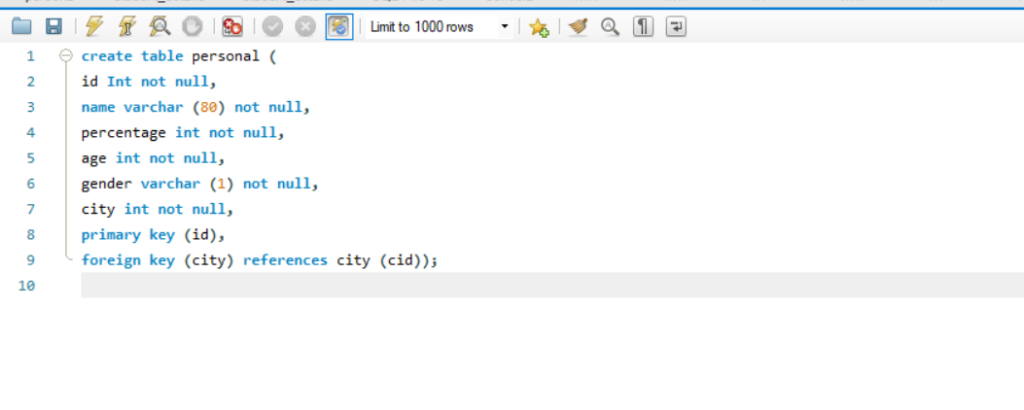SQL server is the most popular database of microsoft company which was develop in 1989. SQL stands for Structure Query Language. It is RDBMs so in this case record is store in tabular format. It is platform dependent because it runs only on windows operating system.
SQL PRIMARY KEY
Primary key always has unique data. A primary key length cannot be exceeded than 900 bytes. A primary key cannot have null value. This table can contain only one primary key. There can be no duplicate value for a primary key is knows as SQL PRIMARY KEY.
Syntax
CREATE TABLE table_name (id INT NOT NULL AUTO_INCREMENT,
name VARCHAR (50) NOT NULL,
age INT NOT NULL,
city VARCHAR (10) NOT NULL,
PRIMARY KEY (id) );
Example of SQL PRIMARY KEY
create table city (
cid INT not null auto_increment,
cityname varchar (100) not NUll,
primary key (cid) );

insert into city (cityname)
values (‘bettiah’),
(‘manipur’),
(‘patna’),
(‘harinagar’),
(‘kanpur’);

Output of SQL PRIMARY KEY

SQL FOREIGN KEY
Foreign key is a field or a column that is use to establish a link between two tables. foreign key in one table use to point primary key in another table is knows as SQL FOREIGN KEY.
Syntax
CREATE TABLE table_name (id INT NOT NULL AUTO_INCREMENT, name VARCHAR (50) NOT NULL, age INT NOT NULL, city VARCHAR (10) NOT NULL, PRIMARY KEY (id) ); FOREIGN KEY (city) REFERENCES City (cid)
Example of SQL FOREIGN KEY
create table personal (
id Int not null,
name varchar (80) not null,
percentage int not null,
age int not null,
gender varchar (1) not null,
city int not null,
primary key (id),
foreign key (city) references city (cid));

Output of SQL FOREIGN KEY

SQL Unique Key
The key is a set of one or more than one columns of a table that uniquely identify a record in a database table is knows as SQL Unique Key.
Example of SQL Unique Key
CREATE TABLE r (
id INT not null unique,
Name varchar (50),
birth_date DATE,
phone VARCHAR(12),
gender VARCHAR(1)
);

INSERT INTO r(id, name, birth_date, phone, gender)
values
(1, “raj”, “1990-10-10”, 784561236, “m”),
(2, “rohit”, “1990-11-10”, 784561236, “m”),
(3, “rohan”, “1995-05-15”, 784561236, “m”),
(4, “rohini”, “1994-09-20”, 784561236, “m”),
(5, “rahul”, “1999-10-12”, 784561236, “m”);

Output of SQL Unique Key

SQL Alternate Key
Feature of Alternate key
- Add Column in a table.
- Changing data types of a column.
- Change Column Name.
- Adding Constraints to column.
- Changing Column position.
- Delete Column
- Renaming Tables
Example of SQL Alternate Key

Output of SQL Alternate Key

If you have any queries regarding this article or if I have missed something on this topic, please feel free to add in the comment down below for the audience. See you guys in another article.
To know more about SQL please Wikipedia click here .
Stay Connected Stay Safe, Thank you



0 Comments